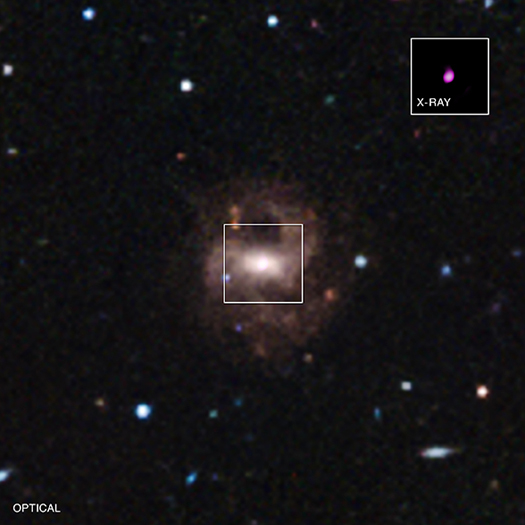Oxymoronic Black Hole Provides Clues to Growth

Astronomers using NASA's Chandra X-ray Observatory and the 6.5-meter Clay Telescope in Chile have identified the smallest supermassive black hole ever detected in the center of a galaxy, as described in our latest press release. This oxymoronic object could provide clues to how much larger black holes formed along with their host galaxies 13 billion years or more in the past.
Astronomers estimate this supermassive black hole is about 50,000 times the mass of the Sun. This is less than half the previous lowest mass for a black hole at the center of a galaxy.
The tiny heavyweight black hole is located in the center of a dwarf disk galaxy, called RGG 118, about 340 million light years from Earth. Our graphic shows a Sloan Digital Sky Survey image of RGG 118 and the inset shows a Chandra image of the galaxy's center. The X-ray point source is produced by hot gas swirling around the black hole.
Researchers estimated the mass of the black hole by studying the motion of cool gas near the center of the galaxy using visible light data from the Clay Telescope. They used the Chandra data to figure out the brightness in X-rays of hot gas swirling toward the black hole. They found that the outward push of radiation pressure of this hot gas is about 1% of the black hole's inward pull of gravity, matching the properties of other supermassive black holes.
More information at http://chandra.harvard.edu/photo/2015/rgg118/index.html
-Megan Watzke, CXC
Please note this is a moderated blog. No pornography, spam, profanity or discriminatory remarks are allowed. No personal attacks are allowed. Users should stay on topic to keep it relevant for the readers.
Read the privacy statement
